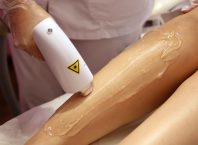Table of Contents
Of all the many forms of cancer, skin cancer is the most common. As of 2015, 5.2 million people were diagnosed with some form of skin cancer. The good news about this type of malignancy is that if it is diagnosed early, it is not only treatable but curable. There are three basic types of skin cancer, and here’s some information about them:

1. Melanoma
Melanoma is the most dangerous type of skin cancer, and if it goes untreated it can lead to death as it metastasizes and invades vital organs. Not only this, it can also appear on mucous membranes anywhere in your body, including your mouth, though melanomas in such areas are rare. It starts out as an asymmetrical mole with irregular edges that displays more than one color.
If you are worried about melanoma, the best thing you can do is to make sure to wear sunscreen when outside in the sun, no matter what time of year it is. This is one of the top preventative practices when it comes to skin cancer. It is also the most practical and simple to do.
2. Squamous Cell
This type of skin cancer begins in the squamous cells, which are the top layer of skin. Squamous cell skin cancer often shows up as a sore that won’t heal or a pearlescent bump. It may crust over, break, bleed and crust over again. Its center can also be depressed, and its edges can be rolled or raised.
These sorts of formations should be checked by a competent dermatologist so that you can get an accurate diagnosis. You should always be seeing a dermatologist for your skin problems, that way, you will be receiving the best care available to you.
Also Read: 4 Treatments to Ask Your Doctor About When You Have Skin Cancer
3. Skin Cancer Treatments
There are a variety of skin cancer treatments for all types of skin cancer. If the disease is caught early, there’s no need for such violent measures as systemic chemotherapy or radiation or extensive surgery though in advanced cases these modalities might be necessary. Even melanoma can be treated with a visit to a dermatologist’s office. One effective treatment is Mohs surgery, where the malignant cells are shaved off layer by layer until they are gone.
Very early or precancerous lesions can also be treated by freezing them. The doctor uses liquid nitrogen, and the dead cells simply slough off after time. Basal and squamous cell cancers can be removed with a special type of blade called a curet followed by an electric needle. Sometimes all that’s needed is the application of a cream that has an anti-cancer medication.
Some cancers are treated by the patient taking a drug that renders cancer cells vulnerable to light, then destroying the cells with lasers. The doctor might also use biological therapy, which lets the immune system destroy the cancer.
4. Basal Cell Carcinoma
Basal cell carcinoma or BCC appears much like squamous cell skin cancer except it starts in the basal, or bottom layer of the skin. BCC is the most common type of skin cancer and is usually found in places that get sun exposure. It is slow-growing cancer that begins as a sore that won’t heal but continues to crust over, break open, and bleed. This is not only nasty, but it is also quite problematic.
After all, no one wants to have skin cancer in any way. Skin cancer is common, but it is easily treatable and curable in its early stages. Even advanced squamous and basal cell skin cancers are not often fatal, though the same isn’t true of melanoma. Doctors continue to look for more ways to safely treat this disease.















